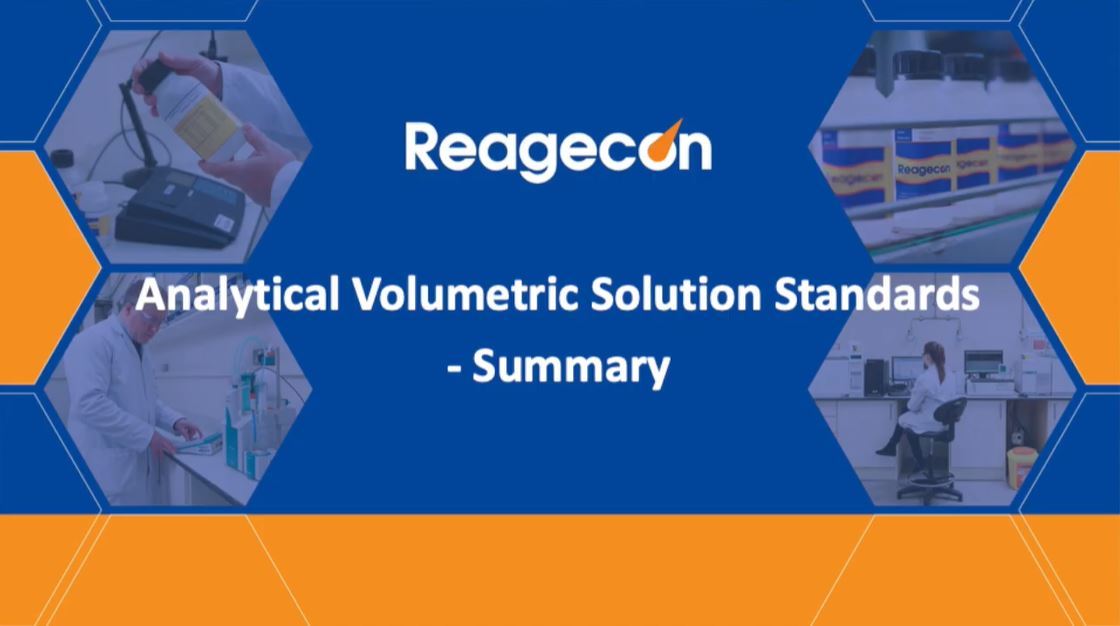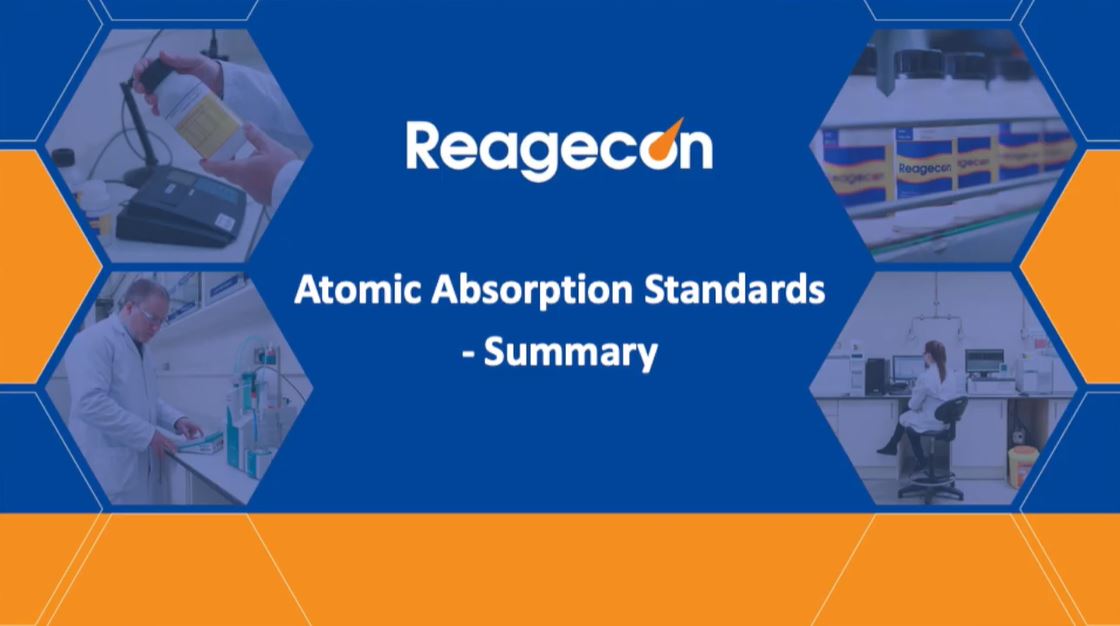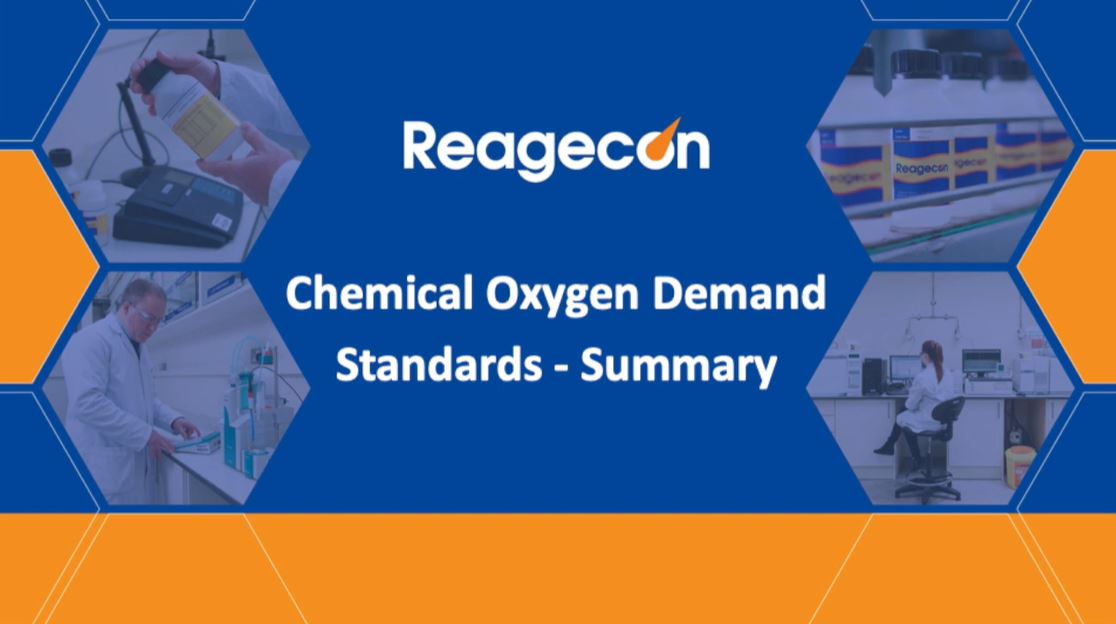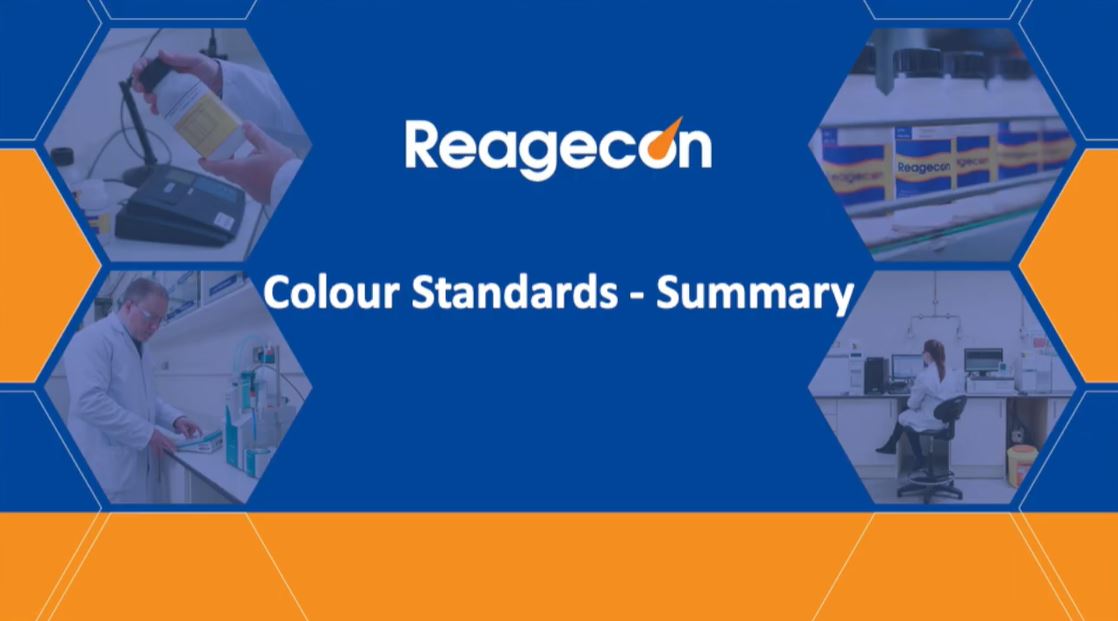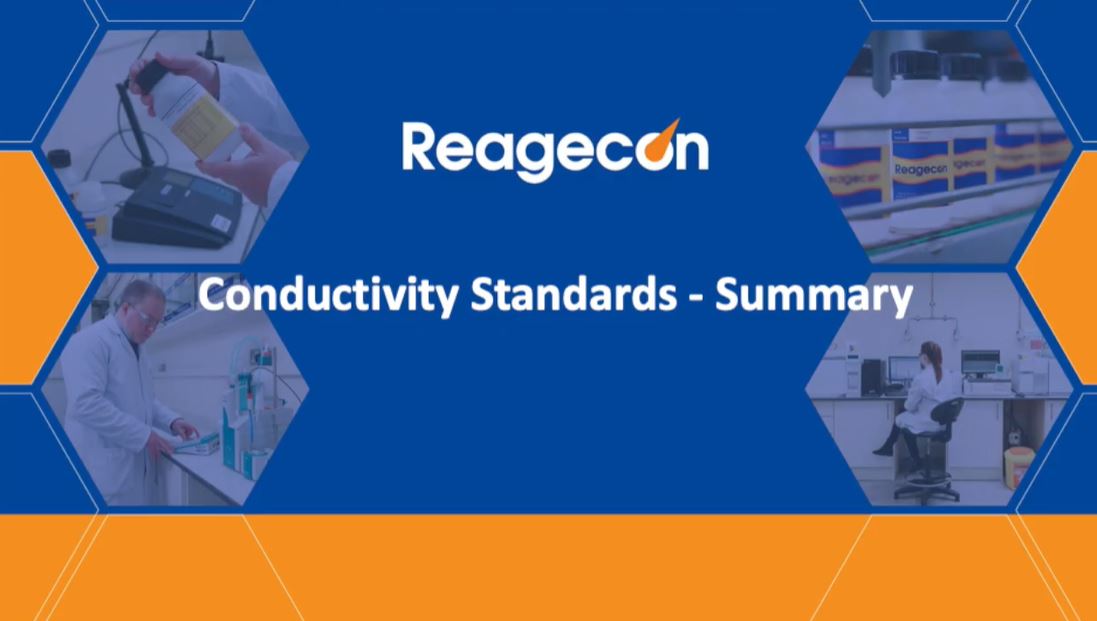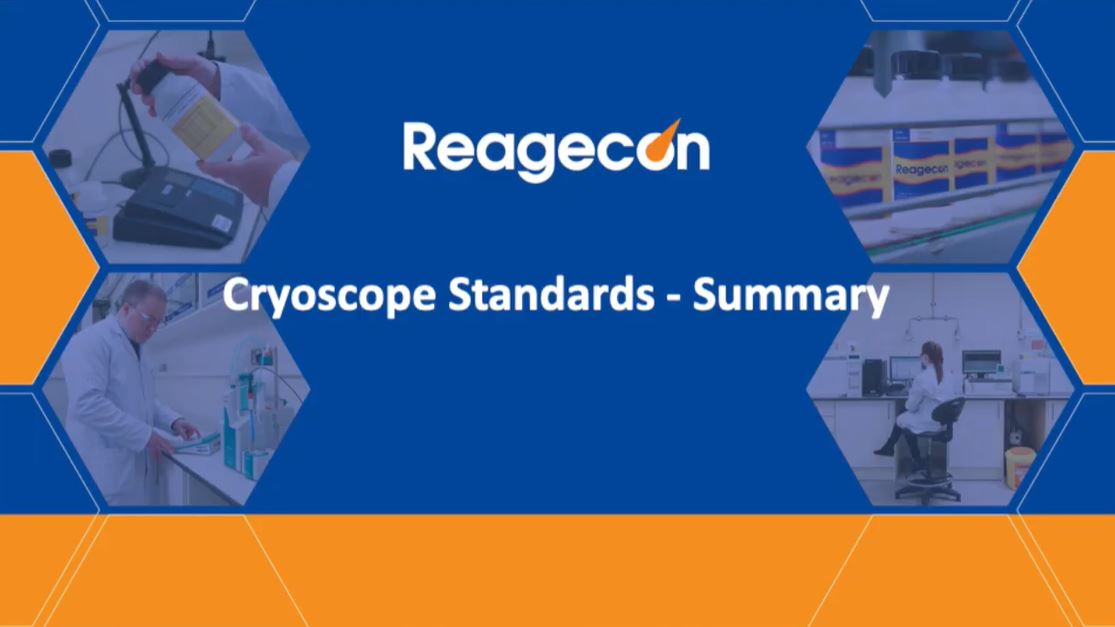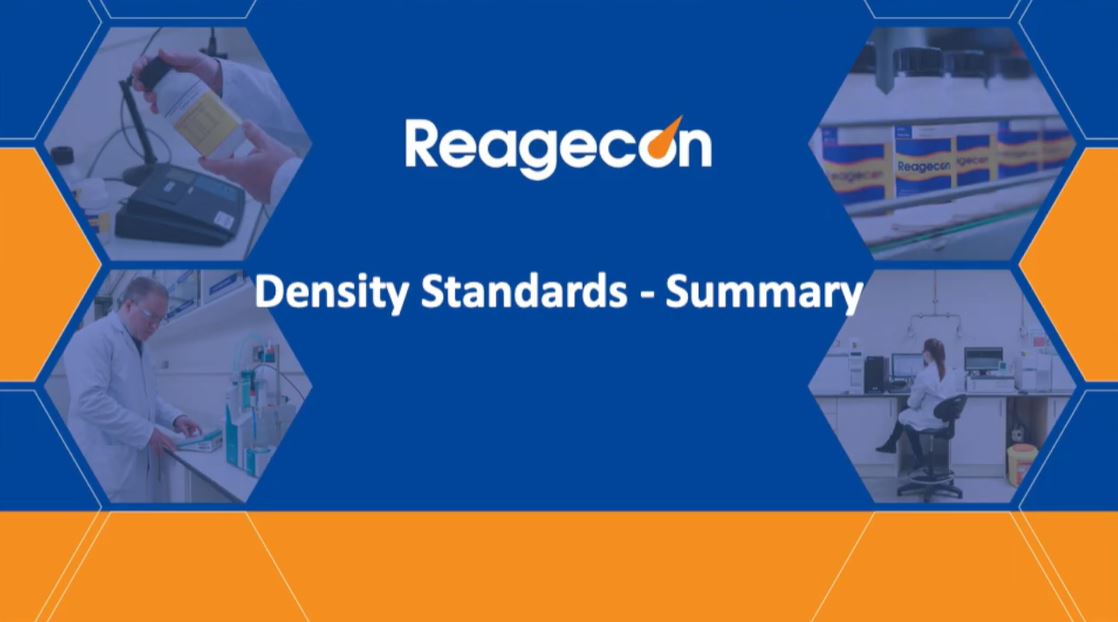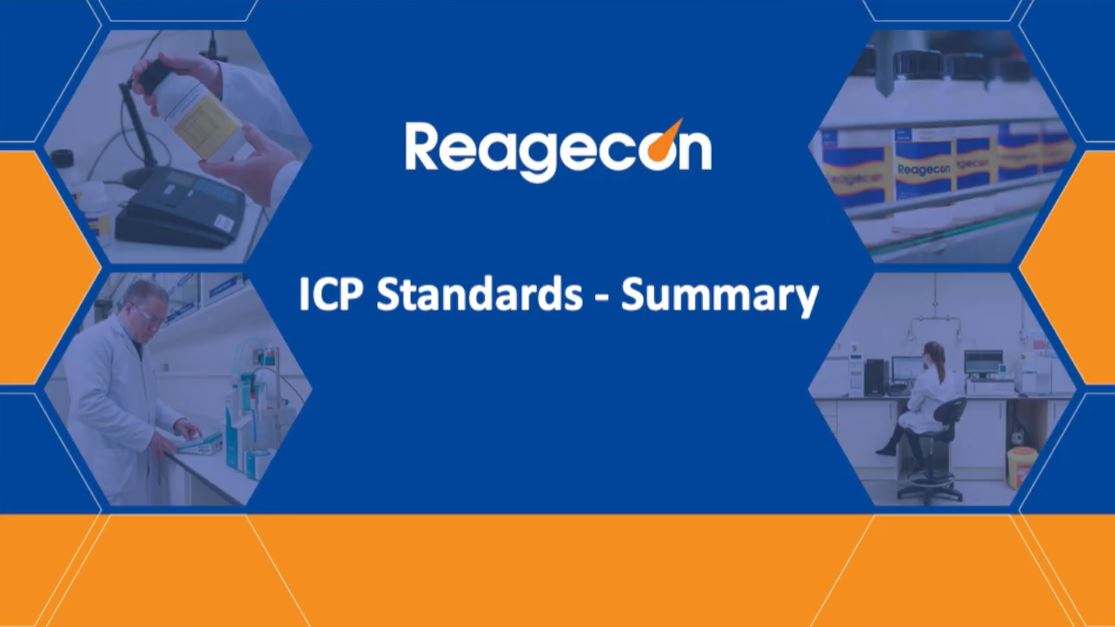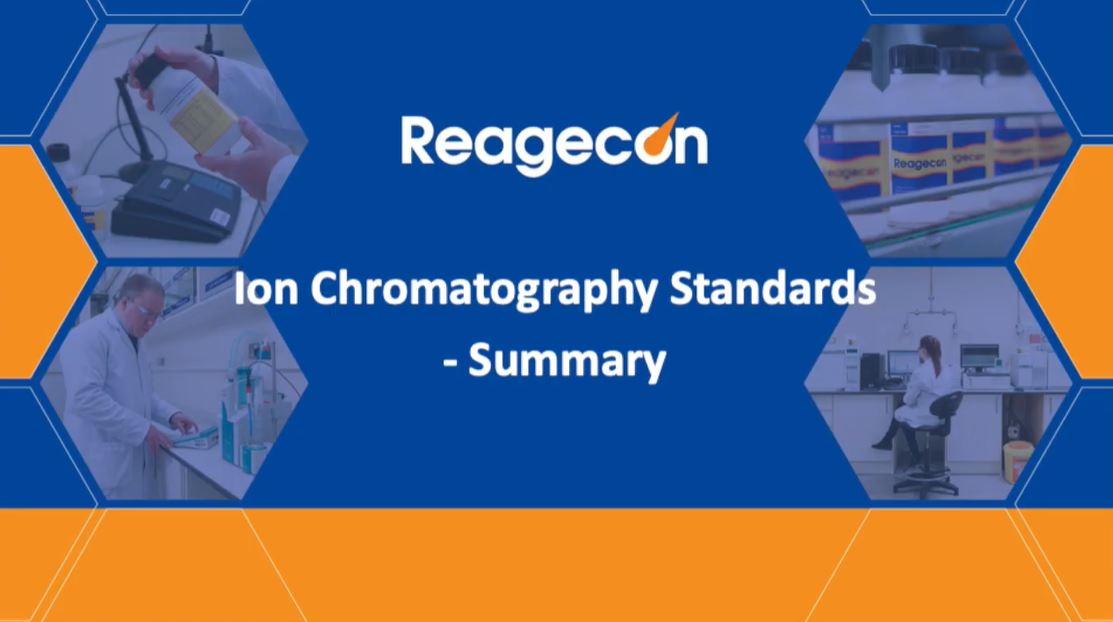Webinars and Videos
Webinars and training videos from Reagecon.
Analytical Volumetric Solutions, Titrants and Indicators
This short video provides viewers with an overview and short summary of Analytical Volumetric Solutions, Titrants and Indicators.
The principle of all titrimetry involves the determination of the quantity of the reagent of known concentration the (titrant), that is required to react completely with an unknown analyte. Volumetric titrimetry involves measuring the volume of the solution of known concentration the (titrant) consumed, gravimetric titrimetry measures the mass of the reagent consumed and coulometric titration measures a direct electrical current of known magnitude that consumes the analyte. In coulmetry, the time it takes to complete the electrochemical reaction, is the measurement.
Atomic Absorption Standards
This short video provides viewers with an overview and short summary of Atomic Absorption Standards.
There are two main types of Atomic Absorption Spectrometry, Flame Atomic Absorption Spectrometry and Graphite Furnace Atomic Absorption Spectrometry. There are advantages both technical and commercial, attributable to each one.
Chemical Oxygen Demand (COD) Reagents & Vials
This short video provides viewers with an overview and short summary of Chemical Oxygen Demand (COD) Reagents & Vials.
Chemical oxygen demand also called COD is widely used as a measurement in wastewater and natural waters. COD is defined as the amount of a specified oxidant that reacts with a sample under controlled conditions and is expressed in mg/l.
Colour Standards
This short video provides viewers with an overview and short summary of Colour Standards.
The measurement of colour is now an exact science. This is due to the simultaneous evolution of high-quality instrumentation, and high-quality standards to calibrate and control this instrumentation.
Colour measurement is also a highly sophisticated science and accurate measurement is necessary in almost every industry. Such industries range from the Pharma and Cosmetics industries, right through to both potable and polluted waters, Beverages both alcoholic and non-alcoholic, Food and many other industrial segments.
Conductivity Standards
This short video provides viewers with an overview and short summary of Conductivity Standards. It briefly describes how Conductivity Standards are measured and used.
The measurement of electrical conductivity in liquid or conductivity measurement as it is more commonly known is an extremely popular and important measurement. The correct performance of the measurement is dependent on using high quality equipment, in particular a good sensor used in the correct manner and in the right environment. It is particularly important that the sensor is calibrated correctly and in a timely manner and that the test is correctly controlled.
Cryoscope Standards – Freezing Point Measurement and Standards
This short video provides viewers with an overview and short summary of Cyroscope Standards. It briefly describes how Cyroscope is measured, the different types and applications of Cryoscope along with what industries predominantly use Cyroscope Standards.
One application of the change in freezing point is to measure the concentration of water in a solution, which is known as Cryoscopy.When water is added to a solution such as milk, the freezing point is elevated towards zero degrees Centigrade and differs markedly from that of a normal, undiluted milk sample.
Density Standards
This short video provides viewers with an overview and short summary of Density Standards.
Density, also called Mass Density, is a fundamental physical property of a material. It is defined as the mass per unit volume at a specific temperature. Mathematically, density is expressed as mass/volume where the SI units are kg/m3 but g/cm3 or g/ml are also widely used. The density of a material varies with temperature and pressure.
Flame Photometry Standards
This short video provides viewers with an overview and short summary of Flame Photometry Standards.
Flame Photometry is particularly suitable for Alkali and Alkaline Earth metals by exploiting the fact, that these metals are excited at a lower temperature than most other metals. When these excited metals return to their normal state, they emit electromagnetic radiation. The wavelengths of this radiation are easily isolated by optical filters and converted to an electrical signal, the magnitude of which is a direct function of the concentration of a particular metal in a sample, standard or control material.
ICP-MS, ICP-OES Standards
This short video provides viewers with an overview and short summary of ICP-MS and ICP-OES Standards.
The measurement of cations and anions is of critical importance in almost every industry. The extent of these industries is almost limitless but can broadly be classified as: Industrial Engineering, agriculture, food, pharmaceutical, mining and geology, medicine and medical device, petrochemicals, metal processing, environmental.
Forty years ago methods of choice for measuring cations and anions included colourimetric measurement, flame photometry, ion selective electrodes and atomic absorption spectroscopy. All of these technologies are still widely used but nowadays where greater sensitivity, versatility or efficiency are required, ICP-OES, ICP-MS, ion chromatography and XRF are widely used.
Ion Chromatography Standards
This short video provides viewers with an overview and short summary of Ion Chromatography Standards.
Ion Chromatography (IC), is a relatively recently developed technology that allows for the separation of molecules on the basis of differences in charge properties. In cation exchange chromatography, positively charged molecules are attached to a negatively charged solid support. Conversely, in anion exchange chromatography, negatively charged molecules are attracted to a positively charged solid support.

